Do Angel Fish Need a Heater?: When it comes to providing the best care for our beloved aquatic pets, there are many factors to consider. One question that often arises is whether angel fish need a heater in their tanks. We all want our angel fish to thrive and be comfortable, but do they really require the added warmth of a heater?
For those who are curious about the well-being of their angel fish, this article will delve into the topic of angel fish heaters and their crucial role in aquarium care. Join me as we explore the temperature requirements of these graceful creatures and uncover the truth about whether or not they truly need a heater to thrive.
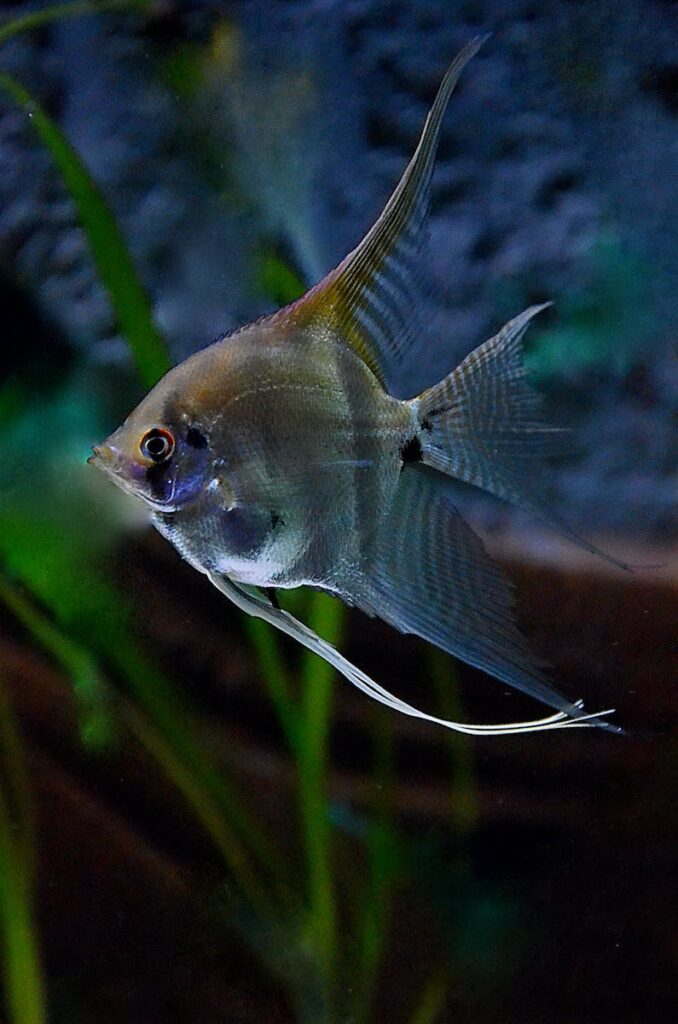
Table of Contents
Do Angel Fish Need a Heater?: Key Takeaways
- Angel fish have specific temperature requirements for optimal health and well-being.
- Maintaining a stable tank temperature is vital for angel fish care.
- There are different types of heaters available for heating angel fish tanks.
- Choosing the right heater and properly installing it is essential for the comfort of your angel fish.
- Regular monitoring and adjustment of tank temperature are crucial for the overall well-being of your angel fish.
Understanding Angel Fish Temperature Requirements.
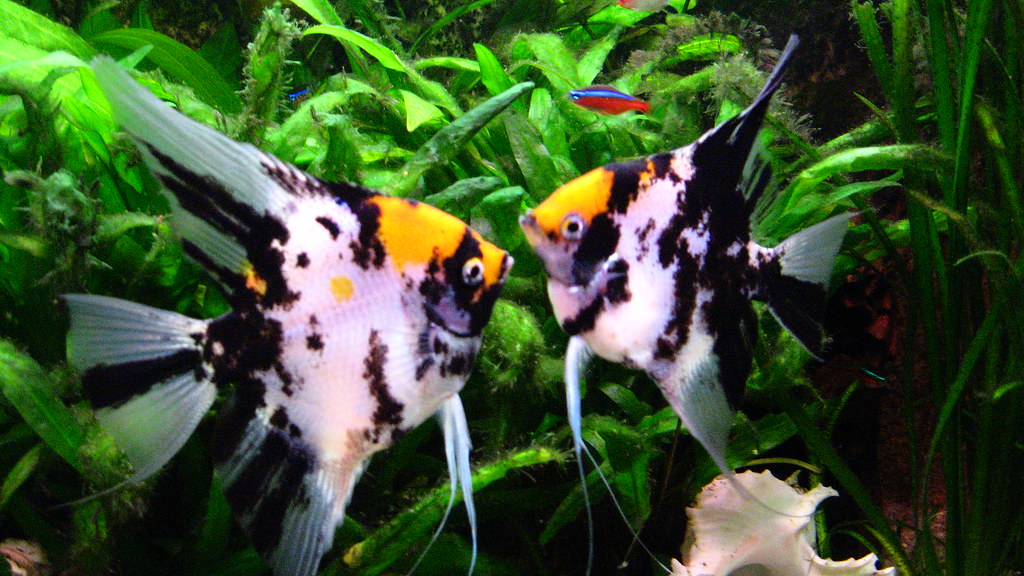
Angel fish are beautiful and graceful creatures that require careful attention to their environment. One crucial aspect of angel fish care is maintaining the right temperature in their tanks. In this section, I will explore the specific temperature needs of angel fish and explain why it is essential to provide them with a consistently comfortable environment.
Angel fish thrive in water temperatures that closely resemble their natural habitat. The ideal temperature range for these fish is between 75°F (24°C) and 80°F (27°C). It is important to note that maintaining a stable temperature within this range is crucial for their overall well-being.
Consistency is key when it comes to temperature control for angel fish. Fluctuations in temperature can cause stress and compromise their health. These delicate creatures are highly sensitive to temperature changes, and sudden or drastic shifts can lead to illnesses and even death. To ensure their optimal health, it is essential to maintain a stable, appropriate temperature in their tanks.
Why is temperature control important for angel fish?
“Maintaining the right temperature is essential for angel fish health and well-being. It affects their metabolism, immune system, and overall behavior.” – Angel Fish Expert
Temperature directly impacts various aspects of an angel fish’s biology. Their metabolism, digestion, and respiratory rates are all influenced by the surrounding temperature. Additionally, a consistent temperature helps to maintain their immune system’s functionality, making them more resistant to illnesses and diseases. Furthermore, proper temperature control ensures that angel fish exhibit their natural behaviors, such as swimming, exploring, and interacting with their tank mates, indicating a healthy and comfortable environment.
Recommended temperature maintenance techniques
Maintaining the ideal temperature for angel fish requires the use of appropriate heating equipment. There are various options available, including submersible heaters and adjustable heaters. These devices allow you to regulate and maintain the desired temperature in their tanks.
When selecting a heater for your angel fish tank, consider factors such as the size of your tank, the heating capacity required, and the reliability of the heater. It is important to choose a heater that can effectively and accurately maintain the desired temperature range.
Once you have installed a heater, regularly monitor the tank temperature using a reliable thermometer. Make adjustments to the heater settings as needed to ensure a consistent temperature. Remember to choose a thermometer that is suitable for an aquarium environment and provides accurate readings.
Monitoring and maintaining the tank temperature is essential to prevent temperature fluctuations. Temperature stress can manifest in angel fish through behavior changes, loss of appetite, or signs of illness. If you observe any indications of temperature stress, take immediate action by adjusting the heater settings and seek professional advice if necessary.
By understanding and meeting the temperature requirements of your angel fish, you can provide them with a comfortable and thriving environment. In the next section, we will explore the role of heat in angel fish health and well-being, delving deeper into the impact of temperature on their overall physiology and behavior.
| Temperature Range | Impact on Angel Fish |
|---|---|
| Below 75°F (24°C) | Can cause sluggishness, reduced appetite, and increased susceptibility to diseases. |
| 75°F (24°C) to 80°F (27°C) | Ideal temperature range for angel fish health and well-being. |
| Above 80°F (27°C) | Can lead to increased stress, heightened metabolism, and decreased oxygen levels. |
The Role of Heat in Angel Fish Health and Well-being.
Temperature plays a crucial role in the overall health and well-being of angel fish. Maintaining the right heat level in their tanks is essential to ensure their optimal growth and longevity. Let’s explore how heat influences various aspects of their lives.
The Impact on Metabolism
The metabolism of angel fish is influenced by the temperature of their environment. Higher temperatures can accelerate their metabolic rate, leading to increased energy expenditure and growth. On the other hand, lower temperatures can slow down their metabolism, resulting in reduced energy levels and slower growth rates.
The Influence on the Immune System
Heat also plays a vital role in the functioning of angel fish’s immune system. Maintaining a suitable temperature range can help promote a strong and robust immune response. It enables them to fight off diseases and infections more effectively, reducing the risk of illness and ensuring their overall well-being.
Behavioral Changes
The temperature of the tank can significantly impact the behavior of angel fish. When the water temperature is within their preferred range, they tend to be more active, explore their surroundings, and exhibit vibrant colors. However, if the temperature is too high or too low, they may become stressed, lethargic, and may even experience changes in their feeding patterns.
“Maintaining the right temperature range for your angel fish is crucial for their overall health and well-being. It is a key factor in their metabolism, immune response, and behavior. Without proper temperature control, they may suffer from various health issues and experience a decline in their overall vitality.”
To better understand the ideal temperature requirements for angel fish, let’s take a look at the comparison table below:
| Tropical Angel Fish | Temperature Range |
|---|---|
| Pterophyllum altum (Altum Angel) | 78-84°F (25-29°C) |
| Pterophyllum leopoldi (Leopold’s Angel) | 78-84°F (25-29°C) |
| Pterophyllum scalare (Common Angel) | 76-82°F (24-28°C) |
As you can see from the table, different types of angel fish have specific temperature preferences. It’s important to research and ensure that your tank’s temperature is within their preferred range for the best care possible.
To visually illustrate the impact of temperature on angel fish health, here’s an image of a vibrant and healthy angel fish thriving in its optimally heated tank:
By understanding and maintaining the right temperature for your angel fish, you can ensure their health, vitality, and overall well-being. In the next section, we will discuss the importance of maintaining a stable tank temperature and the potential consequences of temperature fluctuations.
Importance of a Stable Tank Temperature for Angel Fish.
Maintaining a stable tank temperature is vital for the well-being of angel fish. These delicate creatures, known for their elegant beauty, require a consistent and comfortable environment to thrive. Temperature fluctuations can have adverse effects on their health, behavior, and overall quality of life.
When the tank temperature fluctuates, angel fish may experience stress and become vulnerable to various health issues. They rely on a stable temperature to support their metabolism, immune system, and overall physiological functions. As responsible fishkeepers, it is our duty to provide them with the optimal temperature conditions they need to flourish.
Temperature variations can lead to severe consequences for angel fish. Cold temperatures can slow down their metabolism, leading to reduced activity levels and potentially compromising their immune system. On the other hand, excessively high temperatures can speed up their metabolic rate, causing stress and reducing their ability to fight off diseases.
Furthermore, temperature fluctuations can disrupt the breeding behavior of angel fish. To ensure successful reproduction, a stable and suitable temperature is necessary. Sudden changes in temperature can interfere with their spawning behaviors and hamper their ability to produce healthy, viable offspring.
To illustrate the importance of maintaining a stable tank temperature, let’s take a look at the following table:
| Temperature | Consequences |
|---|---|
| Too Cold | Slowed metabolismReduced immune system functionLower activity levelsIncreased susceptibility to diseases |
| Too Hot | Increased metabolic rateStress and discomfortDifficulty in fighting diseasesInterference with breeding behaviors |
| Optimal Temperature | Healthy metabolismStrong immune systemActive and vibrant behaviorSupport for successful breeding |
As you can see from the table above, maintaining the optimal temperature for angel fish is crucial for their overall well-being. By providing a stable and suitable environment, we can ensure that our angel fish remain healthy, active, and have the best chance of thriving.
Remember:
Consistency is key when it comes to maintaining the temperature in your angel fish tank. Invest in a reliable aquarium heater and use a thermometer to monitor the temperature regularly. Make adjustments as necessary to ensure that the tank temperature remains stable within the ideal range for angel fish.
Options for Heating Angel Fish Tanks.
When it comes to keeping angel fish happy and healthy, maintaining the right temperature in their tanks is crucial. In this section, we will discuss the various heating options available for angel fish tanks, allowing you to create an optimal environment for your beloved aquatic companions. Let’s explore the different types of heaters that can help you achieve the ideal temperature for your angel fish:
Submersible Heaters
Submersible heaters are a popular choice among fish keepers due to their effectiveness and ease of use. These heaters are designed to be fully submerged in the water, helping to distribute heat evenly throughout the tank. They often come with adjustable temperature settings, allowing you to maintain a stable and comfortable environment for your angel fish. Submersible heaters are suitable for both small and large tanks and are generally equipped with safety features, such as automatic shut-off in case of overheating.
Adjustable Heaters
Similar to submersible heaters, adjustable heaters are designed to be submerged in the water. However, what sets them apart is their ability to provide precise temperature control. Adjustable heaters often come with a built-in thermostat that allows you to set and maintain the desired temperature for your angel fish. They are an excellent choice if you prefer to have more control over the heating process and want to ensure that the temperature remains constant.
Heating Mats
Heating mats offer an alternative way to provide heat to your angel fish tank. These mats are placed beneath the tank and gently warm the water from the bottom up. Heating mats are particularly useful for tanks with a larger surface area, as they help distribute heat evenly throughout the tank. They are energy-efficient and can be a good option if you prefer a heating method that is discreet and out of sight.
Inline Heaters
If you have a canister filter system in your angel fish tank, an inline heater may be a suitable option for you. These heaters are installed in the tubing that connects to the canister filter, heating the water as it passes through. Inline heaters are often easy to install and can save space in the aquarium, as they don’t take up any additional room inside the tank. They provide efficient heating and can be controlled using a separate thermostat.
When choosing a heater for your angel fish tank, it’s essential to consider factors such as the size of your tank, the desired temperature range, and the specific needs of your angel fish. Additionally, investing in a reliable and high-quality heater is crucial to ensure the safety and well-being of your aquatic friends.
Now that we have explored the various heating options available, let’s move on to the next section, where we will discuss how to choose the right heater for your angel fish tank.
Choosing the Right Heater for Your Angel Fish.
When it comes to selecting the best heater for your angel fish tank, there are several important factors to consider. Choosing the right heater is essential for maintaining the ideal temperature and creating a comfortable environment for your fish.
First and foremost, take into account the size of your tank. Different heaters have varying heating capacities, so it’s crucial to choose one that can effectively heat the water in your specific tank size. A heater that is too powerful may overheat the water, while a heater that is too weak may struggle to maintain the desired temperature.
Reliability is another key factor to consider. Look for heaters from reputable brands known for their quality and durability. Reading customer reviews and seeking recommendations from experienced aquarists can help you make an informed decision. A reliable heater will provide consistent and accurate temperature control, giving you peace of mind knowing that your angel fish are in a stable and comfortable environment.
Additionally, consider the features offered by different heaters. Some heaters include built-in thermostats to regulate the temperature automatically, while others may have adjustable settings that allow you to fine-tune the heat output. Think about your specific needs and preferences to determine which features would be most beneficial for you and your angel fish.
Remember to choose a heater that is safe for use in your tank. Look for heaters with features such as shatterproof glass and automatic shut-off mechanisms to prevent accidents and ensure the well-being of your fish.
Key Factors to Consider when Choosing a Heater for Your Angel Fish:
- Tank size
- Heating capacity
- Reliability
- Features
- Safety
By carefully considering these factors, you can select the best heater for your angel fish tank, providing them with the optimal temperature and creating a comfortable and thriving environment for your beloved fish.
Setting up and Installing an Aquarium Heater for Angel Fish.
Installing an aquarium heater specifically designed for angel fish is crucial to creating a comfortable and healthy environment for your aquatic pets. Follow these step-by-step instructions to ensure a safe and efficient installation process.
Gather the necessary equipment:
- An aquarium heater suitable for your tank size and angel fish requirements
- A thermometer to monitor the tank temperature
- An adjustable wrench
Step 1: Choose the right location
Place the aquarium heater in a strategic location within the tank. It should be submerged in the water and positioned near the filtration system if possible. Ensure that it doesn’t obstruct any fish or decor.
Step 2: Attach the heater
Using the adjustable wrench, carefully secure the heater to the side of the tank. Ensure that it is firmly attached and stable to prevent any accidents or damage.
Step 3: Connect the power supply
Connect the aquarium heater to a power source. Check that the voltage matches the specifications provided by the manufacturer. It’s essential to use a grounded outlet and avoid using extension cords for safety purposes.
Step 4: Set the temperature
Refer to the heater’s instructions to set the desired temperature for your angel fish tank. Consider the temperature range suitable for angel fish and adjust accordingly to ensure their comfort and well-being.
Step 5: Monitor and check regularly
Once the heater is installed and functioning, regularly monitor the temperature using the thermometer. Make sure it remains within the optimal range for angel fish.
| Temperature Requirement | Ideal Range |
|---|---|
| Tropical Angel Fish | 75°F to 82°F (24°C to 28°C) |
| Marble Angel Fish | 78°F to 82°F (25.5°C to 28°C) |
It is important to note that temperature requirements may vary slightly depending on the specific breed and individual needs of your angel fish. Therefore, continuous monitoring is key.
Step 6: Be cautious when adjusting
If you need to adjust the temperature, do so gradually, making small changes over time. Rapid temperature fluctuations can stress angel fish and negatively impact their health.
By properly setting up and installing an aquarium heater specifically designed for angel fish, you can maintain a consistent and comfortable temperature in the tank. This creates an ideal environment for your angel fish to thrive and enhances their overall health and well-being.
Monitoring and Adjusting the Tank Temperature.
Regularly monitoring and adjusting the tank temperature is crucial for maintaining the health and well-being of your angel fish. Fluctuations in temperature can have a significant impact on their overall health and can even be life-threatening. To ensure a consistently comfortable environment for your angel fish, follow these tips:
- Use reliable thermometers: Invest in high-quality thermometers to accurately measure the temperature of the tank. Place the thermometer in a central location that is easily visible. This will help you monitor the temperature accurately and make necessary adjustments.
- Monitor temperature fluctuations: Check the tank temperature at least once a day to identify any fluctuations. Fluctuations can occur due to various factors, such as changes in room temperature, faulty equipment, or power outages. It’s important to promptly address any temperature changes to prevent stress and health issues in your angel fish.
- Adjust heater settings: If you notice temperature deviations, adjust the settings on your aquarium heater accordingly. Most heaters come with adjustable knobs or digital controls that allow you to fine-tune the temperature. Follow the manufacturer’s instructions to make accurate adjustments and ensure the heater is functioning properly.
By regularly monitoring the tank temperature and making necessary adjustments, you can maintain a stable and comfortable environment for your angel fish. This will contribute to their overall health, happiness, and longevity.
| Key Points: | Benefits: |
|---|---|
| Regularly monitor the tank temperature | Prevent temperature fluctuations and stress in angel fish |
| Use reliable thermometers | Accurately measure the temperature |
| Adjust heater settings as needed | Maintain a stable and comfortable environment |
Remember, maintaining the right temperature for your angel fish is essential for their well-being. By following these monitoring and adjustment practices, you can provide them with a safe and optimal habitat.
Signs of Temperature Stress and How to React.
As responsible angel fish owners, it’s important to be able to recognize signs of temperature stress in our finned friends. Monitoring their behavior and appearance can help us identify if they’re experiencing any temperature-related issues.
Here are some common signs of temperature stress to look out for:
- Increased lethargy or reduced activity levels
- Loss of appetite
- Clamped fins
- Rapid or irregular breathing
- Color changes, such as pale or darkened patches
If you notice any of these signs, it’s crucial to react promptly to alleviate any potential harm to your angel fish.
Here’s what you can do:
- Check the tank temperature using a reliable aquarium thermometer. Confirm if it falls within the recommended range for angel fish.
- Adjust the heater settings if necessary. Gradual changes over time are recommended to prevent sudden temperature fluctuations.
- Consider using a separate quarantine tank with the correct temperature to provide a stress-free environment for your fish while you address the issue.
- Consult a veterinarian or experienced aquarist for guidance if the signs persist or worsen.
“It’s crucial to react promptly to alleviate any potential harm to your angel fish.”
Remember, maintaining proper temperature control is key to ensuring the health and well-being of your angel fish.
| Signs of Temperature Stress | Recommended Actions |
|---|---|
| Increased lethargy or reduced activity levels | Check tank temperature and adjust the heater settings if needed. Consider using a quarantine tank. |
| Loss of appetite | Monitor tank temperature and consult a veterinarian if the issue persists. |
| Clamped fins | Ensure proper tank temperature and water quality. Consider seeking advice from experienced aquarists. |
| Rapid or irregular breathing | Check for temperature fluctuations. Utilize a separate quarantine tank if necessary. |
| Color changes, such as pale or darkened patches | Stabilize and monitor tank temperature. Seek professional advice if symptoms persist. |
Reacting promptly to signs of temperature stress can make a significant difference in the well-being of your angel fish. Monitoring the tank temperature, adjusting settings accordingly, and seeking professional advice when necessary will help ensure that your fish can thrive in their environment.
Additional Tips for Temperature Control
To provide the optimal environment for your angel fish, consider the following tips:
- Use a reliable aquarium heater with a built-in thermostat to maintain a stable temperature.
- Place the heater near the water flow, such as near the filter outlet, for even heat distribution.
- Avoid placing the tank near windows or drafty areas to prevent temperature fluctuations.
- Regularly monitor the tank temperature using an accurate thermometer.
- Maintain a consistent room temperature to reduce external temperature influences.
By being vigilant and proactive in monitoring your angel fish’s temperature needs, you can provide them with a comfortable and stress-free environment, ensuring their health and overall well-being.
Other Considerations for Angel Fish Care.
While controlling the temperature of your angel fish tank is crucial, there are other factors to consider for their overall well-being. Paying attention to these aspects will ensure a healthy and thriving habitat for your angel fish.
Water Quality
Maintaining excellent water quality is essential for the health of your angel fish. Regularly test the water parameters, including pH level, ammonia, nitrite, and nitrate levels. Use appropriate water conditioners and perform regular water changes to keep the water clean and free from harmful substances.
Tank Size
Providing your angel fish with an adequately sized tank is vital. These fish require ample space to swim and explore. A tank that is too small can cause stress and hinder their growth. Consider the adult size of your angel fish and provide a tank that can accommodate their needs.
Proper Filtration
Adequate filtration is crucial to maintain a clean and healthy tank environment for your angel fish. Choose a filter that is suitable for the tank size and consider a filter with adjustable flow rates to prevent strong currents that may stress your fish.
Nutrition
Feeding your angel fish a balanced diet is essential for their overall health. Provide a variety of high-quality pellets, flakes, and frozen or live foods to meet their nutritional needs. Be mindful of feeding amounts to prevent overfeeding, which can harm water quality.
Other Considerations for Angel Fish Care
| Consideration | Description |
|---|---|
| Water Quality | Maintain excellent water quality by regularly testing parameters and performing water changes. |
| Tank Size | Provide an adequately sized tank to accommodate the needs of your angel fish. |
| Proper Filtration | Ensure proper filtration to maintain a clean and healthy tank environment. |
| Nutrition | Feed your angel fish a balanced diet of high-quality pellets, flakes, and live or frozen foods. |
By addressing these considerations, in addition to controlling the tank temperature, you can provide the best possible care for your angel fish.
Tips for Maintaining a Healthy Angel Fish Tank.
Keeping your angel fish tank in optimal condition is essential for the health and well-being of your fish. In this section, I will provide you with some valuable tips and advice to help you maintain a healthy and thriving environment for your angel fish.
Regular Tank Maintenance
Maintaining a regular cleaning routine is crucial for keeping your angel fish tank clean and free from harmful substances. Make sure to:
- Perform regular water changes to remove toxins and maintain water quality.
- Clean and replace the filter media as recommended by the manufacturer.
- Remove any uneaten food or debris from the tank to prevent water contamination.
- Regularly check the tank for any signs of algae growth and clean it accordingly.
Water Changes
Regular water changes are an essential part of maintaining a healthy angel fish tank. They help maintain stable water parameters and remove toxins that can be harmful to your fish. Here are some tips to keep in mind:
- Perform partial water changes of around 25% every 1-2 weeks.
- Use a dechlorinator to treat tap water before adding it to the tank.
- Ensure the new water is approximately the same temperature as the tank water to prevent temperature shock.
- Slowly add the new water to the tank to minimize stress on the fish.
Monitor Water Parameters
Regularly monitoring the water parameters in your angel fish tank is crucial for maintaining a healthy environment. Use a reliable water test kit to check the following parameters:
- pH levels: Angel fish prefer a slightly acidic to neutral pH range of 6.5-7.5.
- Ammonia and nitrite levels: These should always be at zero.
- Nitrate levels: Ideally, nitrate levels should be below 20 ppm.
- Temperature: Ensure the water temperature remains within the recommended range for angel fish.
Proper Feeding
Feeding your angel fish a balanced and nutritious diet is essential for their overall health. Here are some tips for proper feeding:
- Feed them small, frequent meals rather than one large feeding.
- Choose high-quality fish food specifically formulated for angel fish.
- Avoid overfeeding, as it can lead to water quality issues.
- Provide a varied diet that includes both dry and frozen foods.
Additional Care Requirements
Angel fish have specific care requirements that are essential for their well-being. Here are some additional tips to consider:
- Ensure your tank is appropriately sized for angel fish, providing ample space for swimming and territories.
- Provide plenty of hiding places and objects for the fish to explore, such as caves, plants, and driftwood.
- Keep the tank away from direct sunlight to prevent excessive algae growth and fluctuating temperatures.
- Monitor the behavior and appearance of your angel fish regularly, as any changes could indicate potential health issues.
By following these tips and taking proper care of your angel fish tank, you can provide a conducive environment for their health and happiness. Remember, maintaining consistent temperature control and ensuring optimal water quality are key factors in keeping your angel fish thriving.
Conclusion.
In this article, we have explored the question of whether angel fish need a heater in their tanks, and the importance of providing them with the right temperature for optimal care. We have learned that maintaining a stable and appropriate temperature is crucial for the health and well-being of these elegant aquarium favorites.
By understanding the temperature requirements of angel fish and the impact of heat on their metabolism, immune system, and behavior, we can create a comfortable and thriving environment for them. Whether it’s through submersible heaters or adjustable heaters, there are various heating options available to suit different tank sizes and heating capacities.
Setting up and installing an aquarium heater for angel fish requires careful consideration, and it is essential to monitor and adjust the tank temperature regularly. By being aware of the signs of temperature stress and knowing how to react appropriately, we can ensure the well-being of our angel fish.
Ultimately, by meeting the temperature needs of angel fish and taking other important factors into consideration such as water quality, tank size, filtration, and nutrition, we can maintain a healthy and thriving environment that promotes the overall well-being of these exquisite creatures.
FAQ
Do angel fish need a heater?
Yes, angel fish require a heater in their tanks. They are tropical fish that thrive in warm water, so maintaining the right temperature is crucial for their well-being.
What is the ideal temperature range for angel fish?
The ideal temperature range for angel fish is between 76°F (24°C) and 82°F (28°C). It is important to provide them with a consistently comfortable environment within this range.
Why is heat important for angel fish?
Heat plays a critical role in the overall health and well-being of angel fish. It affects their metabolism, immune system, and behavior. Proper heat levels promote digestion, enhance their immune response, and keep them active and vibrant.
What are the consequences of temperature fluctuations for angel fish?
Temperature fluctuations can have negative effects on angel fish. Sudden or prolonged drops or increases in temperature can stress them, weaken their immune system, and make them more susceptible to diseases. It is important to maintain a stable tank temperature to avoid such issues.
What heating options are available for angel fish tanks?
There are various heating options available for angel fish tanks. Submersible heaters are common and are placed in the water. Adjustable heaters allow you to control the temperature more precisely. It is important to choose a heater suitable for the size of your tank and the specific needs of your angel fish.
How do I choose the right heater for my angel fish tank?
When choosing a heater for your angel fish tank, consider factors such as the size of the tank, the heating capacity of the heater, and its reliability. It is advisable to select a heater from a reputable brand with positive reviews to ensure its effectiveness and durability.
How do I set up and install an aquarium heater for angel fish?
To set up and install an aquarium heater for angel fish, follow the manufacturer’s instructions. Generally, you will need to attach the heater to the tank wall using suction cups or a mounting bracket. Ensure the heater is fully submerged in the water and that it is securely in place to prevent accidents.
How do I monitor and adjust the tank temperature for angel fish?
It is important to regularly monitor the tank temperature using a reliable thermometer. Adjust the heater settings as needed to maintain the desired temperature range. Aim for consistency in the tank temperature and avoid sudden changes that may stress the angel fish.
What are the signs of temperature stress in angel fish?
Signs of temperature stress in angel fish include increased lethargy, loss of appetite, clamped fins, or abnormal swimming patterns. If you notice any of these signs, it may indicate a temperature-related issue, and you should take steps to address it promptly.
What other considerations should I keep in mind for angel fish care?
In addition to temperature control, other important considerations for angel fish care include maintaining good water quality, providing a suitable tank size, implementing proper filtration, and ensuring a balanced diet. All of these factors contribute to the overall health and well-being of your angel fish.
What are some tips for maintaining a healthy angel fish tank?
To maintain a healthy angel fish tank, establish a regular maintenance routine that includes partial water changes, cleaning the tank and filter, and monitoring water parameters. Additionally, provide proper nutrition, avoid overcrowding, and observe the behavior and appearance of your angel fish for any signs of illness or stress.
References
Aquarium and Tropical Fish Association (ATA)
National Aquarium Society (NAS)
Ornamental Aquatic Trade Association (OATA)
Associated Koi Clubs of America
International Federation of Online Clubs and Aquatic Societies (IFOCAS)
Federation of British Aquatic Societies (FBAS)
Northeast Council of Aquarium Societies (NEC)
Federation of American Aquarium Societies (FAAS)
Please check other articles on this website, I have listed some of them here:
Everything You Need to Know About Caring for Blue Zebra Cichlids in Your Aquarium
Everything You Need to Know About Torch Coral: A Stunning Addition to Your Marine Aquarium
The Fascinating Penguin Tetra: Thayeria boehlkei (2023-24)
The Ultimate Guide to Scarlet Badis Care and Breeding
The Ultimate Bamboo Shrimp | Flower Shrimp Guide Which You Dont Want to Miss Out 2023
The Vibrant and Captivating Strawberry Peacock Cichlid: A Guide to Care and Maintenance
Electric Blue Acara: The Ultimate Guide To Care And Keeping
Best Fish for a 40 Gallon Tank: Top Choices for a Thriving Aquarium
Simple Guide to Easy-to-Care-for Aquarium Plants
Discover the Diverse Corydoras Catfish Varieties- A Guide
Get to Know Various Types of Algae Eaters
Master Guide: Best Water Parameters for Goldfish Care 2023-24
Mastering Black Ghost Knife Fish Care: A Comprehensive Guide
Optimal pH Levels for Tropical Fish: Essential Aquarium Guide
Discovering Freshwater Snail Species: An In-depth Guide
Expert Tips for Breeding Guppies: Keys to Successful Fishkeeping
Discover Peaceful Community Fish: Your Guide to Calm Aquatics
Ultimate Guide to Live Food for Betta Fish — Healthy Choices
Complete Guide to Your Perfect Cichlid Tank Setup
Your Guide to the Best Substrate for Planted Aquariums
Essential Guide to Discus Fish Care: Help Your Pets Thrive!
Grow Your Own Eden: Beginner-Friendly Aquascaping Plants Guide
Perfect Neon Tetra Tank Mates: Guide to Aquarium Harmony
Product Review of Eheim Classic vs Professional
The Ultimate Guide to Discus Fish Care
What Fish Can Live With Discus?
Ideal pH for Discus Fish | Aquarium Water Guide
How to Sex Discus Fish?: A Simple Guide for Hobbyists
Complete Discus Fish Tank Setup Guide
Can Discus Fish Live With Angelfish? The Complete Guide
Discus Diet Guide: What Do Discus Fish Eat?
Are Discus Fish Hard to Keep? Insights & Tips.
Optimal Discus Fish Water Parameters Guide
Discus Fish Size Guide 2024: How Big Do Discus Fish Get?
Ultimate Million Fish Guppy Care Guide 2024
Simple Guide to Easy-to-Care-for Aquarium Plants
Grow Your Own Eden: Beginner-Friendly Aquascaping Plants Guide
Hornwort Aquarium Plants: The Ultimate Guide to Care and Maintenance
Aquarium Equipment for Beginners: The Complete Checklist
Feeding Your Aquarium Fish: The Complete Guide
Common Beginner Fishkeeping Mistakes and How to Avoid Them!
Aquarium Plants for Beginners: Easy Care and Beautiful Options
Keeping Your Aquarium Water Clean and Healthy: The Complete Guide
Breeding Aquarium Fish: A Comprehensive Guide
All You Need to Know About Keeping Angel Fish in Your Aquarium
Marine Aquariums: The Ultimate Challenge for Experienced Hobbyists
Tech in the Tank: Must-Have Gadgets for Aquarium Automation
Dwarf Sucking Catfish : The Ultimate Guide to Keeping and Caring for Oto Catfish
The Science of Aquarium Water Chemistry: Understanding pH, KH, and GH
Veiltail Goldfish: The Exquisite Beauty of Flowing Fins
Perfect Neon Tetra Tank Mates: Guide to Aquarium Harmony
Goldfish Care: Beyond the Bowl – Everything You Need to Know
Master Red Tail Shark Care: Tips, Tank Mates & Surprising Traits!
Sheepshead Wrasse Facts & Habitat Guide
Unveiling the Unique Asian Sheepshead Wrasse: A Fascinating Reef Fish with Quirky Behavior
Peacock Wrasse: A Dazzling Addition to Your Aquarium
Vibrant Wrasse Fish: Care Guide & Species Info
Bluestreak Cleaner Wrasse – Vibrant Reef Ally
Coris Wrasse Care Guide for Saltwater Aquariums
Melanurus Wrasse Care Guide & Habitat Tips
The Ultimate Guide to Kuhli Loach
The Ultimate Guide to Popular Loach Species for Freshwater Tanks
Yoyo Loach: The Ultimate Guide to This Fun and Friendly Fish
How to Care for Clown Loaches: The Ultimate Guide for Aquarium Lovers
Optimal Times to Feed Tropical Fish Daily
How to Care for Dojo Loach, the Friendly and Playful Aquarium Fish
How to Care for Zebra Loach: The Ultimate Guide for Beginners
Fu Manchu Lionfish: The Most Beautiful and Mysterious Fish in the Ocean?
The Ultimate Guide to Lionfish Sting: Symptoms, Treatment, and Prevention
Caring for Dwarf Lionfish: Tips & Facts
Hillstream Loach: The Ultimate Guide to Keeping These Unique Fish
The Complete Guide to Platy Fish: Care, Varieties, and Breeding Tips
Endlers Livebearers Care & Breeding Tips
Livebearer Species: The Ultimate Guide
Livebearers vs. Egglayers: Understanding Fish Reproduction
Rosy Barb Care 101: Tank Mates, Size, Breeding, Diet & More
The Complete Oranda Goldfish Care Guide: From Tank Setup, Feeding to Breeding
What Do Koi Fish Eat? Optimal Diet Tips
Koi Fish Lifespan: Facts & Tips Unveiled
Koi Fish Prices: How Much Do Koi Fish Cost?
Unveiling Koi Fish Sizes: How Big Do Koi Fish Get?
Exploring Types of Koi Fish for Your Pond
Butterfly Koi Fish Care Tips and Habitat Guide
Can You Eat Koi Fish? Unveiling the Facts
Top 10 Fish for a Planted Aquarium, everything you need to know
I am a passionate aquarist with over 30 years of hands-on experience in fishkeeping. My journey began at a young age, collecting fish from the wild and learning through experimentation. Specializing in tropical fish, I bring a deep understanding of the hobby to FishKeepingMadeSimple. The site provides honest, detailed reviews of essential products and accessories to help fellow enthusiasts create the best environments for their fish.









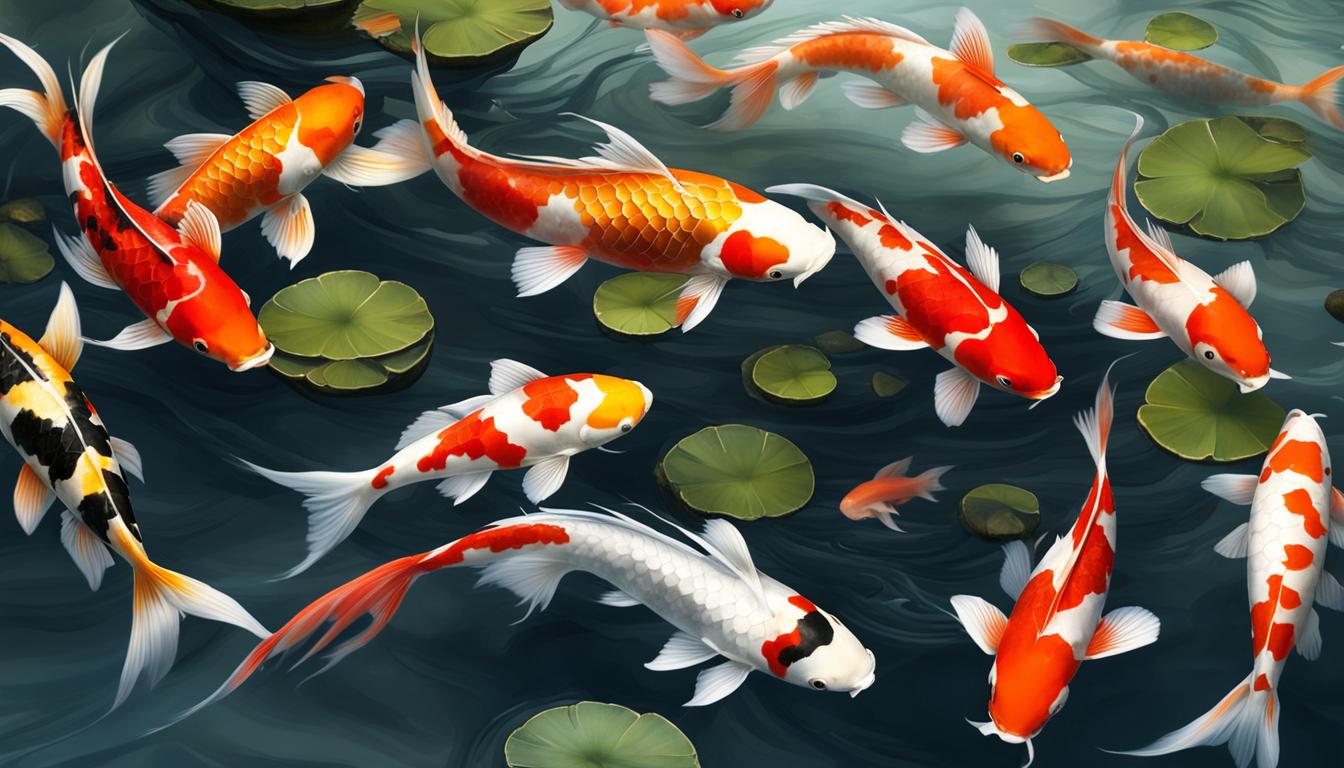
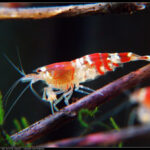

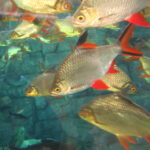
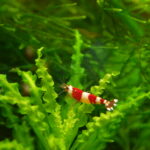
[…] Consider the number of butterfly koi fish you plan to have in your pond and plan accordingly. As a general guideline, each adult koi requires around 250 gallons of water. Factor in the growth potential of your fish and plan for their future needs. […]
[…] and parasite-free environment for your fish. Remember to consult a vet if you have any concerns or need further assistance with treating fish […]
[…] needs with German blue rams. Rams do well in warm water, from 72° to 79°F, with a pH of 5 to 7.5. Fish needing cooler water or very different pH levels may not be suitable […]
[…] rams involves the right tank size, water conditions, and a strong filter system. These energetic fish need a special home to be healthy and happy. Ensuring the right conditions is crucial for their […]
[…] By following these guidelines and selecting suitable tankmates, you can create a thriving and peaceful community tank for your Balloon Molly Fish. Remember to always monitor the tank and make adjustments as needed to ensure the well-being of all the fish. […]